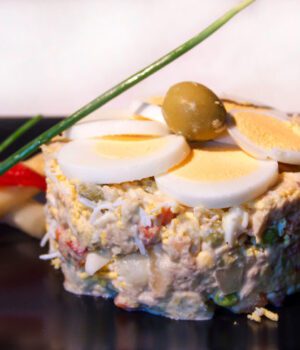With the summer we look for dishes that are simple, easy to prepare and most importantly that are fresh. Without a doubt, the Russian salad meets all the requirements to be a summer dish, although it has room on our menus to enjoy it throughout the year.
It is not easy, as it happens with many recipes, to know the origin of the Russian salad. It seems that it was in the middle of the XNUMXth century that a Russian chef of Franco-Belgian origin named Lucien Olivier served a salad in his famous Moscow restaurant called Hermitage. There he together with his partner Yakov Pegov popularized this salad. They served it with game meat such as partridge or venison and crab or caviar, as well as potatoes, boiled hollow and cucumber. They also added mayonnaise with capers and mustard. Obviously with time and passing through different countries the Russian salad, or Olivier as some prefer to call it, has had changes.
The anecdote of the name of the dish is that during the Franco regime they wanted to change the name. All to avoid calling her Russian and being associated with communism. It was tried with the name of imperial salad and even with that of national salad but the idea did not take root.
Russian salad in Spain
In Spain, the Russian salad is a well-established and well-known recipe for more than a century. It is made with cooked vegetables and legumes cut into small pieces or cubes. The cooked vegetables are livened up with meat, fish, shellfish or crustaceans and abundant mayonnaise sauce is added and mixed.
The classic proposal is that in addition to the cooked vegetables such as potatoes, young beans, carrots, canned tuna, prawns, surimi, avocado, olives, hard-boiled eggs, etc. can be added. In the recipe book there are many options and proposals for this preparation. The market also provides already cut and frozen vegetables to help the preparation.
The role of mayonnaise in this recipe and its conservation is important. Remember that mayonnaise must always be kept cold to reduce the risk of salmonella contamination.







